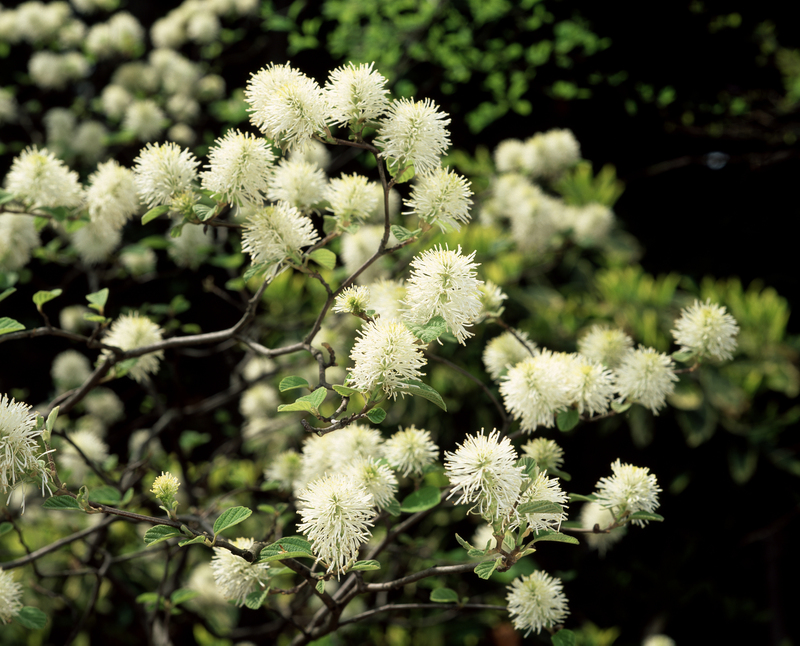Garden Winter Care: Strategies to Keep Your Plants Safe
Posted on 24/05/2025
Garden Winter Care: Strategies to Keep Your Plants Safe
With the arrival of cold months, gardeners face an annual challenge: protecting gardens in winter. Ensuring the safety and health of your plants during frost, snow, and fluctuating temperatures is crucial for a vibrant garden come spring. In this comprehensive guide, we'll delve into garden winter care strategies that safeguard both outdoor and indoor plants, offering doable tips, methods, and expert advice to keep your green spaces flourishing even in the freeze.
Why Is Winter Care Important for Your Garden?
Winter brings a mix of threats: sub-zero temperatures, biting winds, fluctuating humidity, and limited sunlight. These conditions can stress or even kill vulnerable plants unless you implement a solid winter garden maintenance routine. Proper winter garden care not only preserves your current plants but sets a strong stage for next season's growth, helping your garden recover quickly and blossom even more spectacularly.
- Perennials may die back without insulation.
- Annuals succumb quickly to frost.
- Evergreens can suffer from desiccation in dry winter winds.
- Bulbs might rot or freeze if not mulched properly.
- Soil health deteriorates with severe freeze-thaw cycles.
By understanding these risks and practicing effective winter plant protection strategies, you ensure your garden's resilience and longevity.

Essential Garden Winter Care Tips
1. Mulching: Your Garden's Best Winter Blanket
Mulching is a foundational element of garden winter care. Applying a thick layer of organic mulch such as shredded leaves, straw, or bark chips over garden beds insulates the soil, helping to:
- Maintain a stable temperature around plant roots
- Retain vital soil moisture
- Suppress winter weed growth
- Prevent soil erosion caused by snowmelt and wind
2. Watering Before Winter
It's tempting to forget watering as temperatures dip, but ensuring your garden is well hydrated before the ground freezes is vital for winter plant survival.
- Deep watering encourages strong root systems in trees, shrubs, and perennials.
- Frozen ground halts absorption of new water, so deed soakings in late autumn give plants a buffer.
- Don't water if ground is already frozen--this can cause root rot.
3. Shield Plants Against Frost and Snow
Sudden frosts can devastate tender plants. Use these winter protection strategies for plants:
- Row covers: Light, breathable fabrics provide several degrees of protection for vegetable beds and young perennials.
- Cloches and cold frames: Ideal for individual plants or small beds, especially in vegetable or herb patches.
- Burlap wraps: Encase shrubs and young trees with burlap to block chilling winds.
- For heavy snow, shake off excess accumulation from branches to avoid breakage, especially on evergreens.
4. Pruning and Cleaning Up Your Garden
A common question is: Should you prune in winter? Generally, major pruning should wait until late winter or very early spring, when plants are still dormant but the threat of deep freeze has passed. However:
- Remove dead or diseased branches in autumn to prevent harboring pests and diseases through winter.
- Clean up debris: Fallen leaves and rotting plant material can house overwintering insects and fungi. Compost healthy leaves, but trash diseased ones.
- Leave some seed heads for winter interest and food for birds.
5. Protecting Container Plants During Winter
Container-grown plants are especially vulnerable because their roots are above-ground and more exposed to temperature swings. Garden winter care for pots and containers includes:
- Moving them against south-facing walls to capture reflected heat.
- Grouping containers together to create a microclimate.
- Wrapping pots with bubble wrap, burlap, or even old blankets to insulate roots.
- Using pot feet or bricks to elevate containers and improve drainage.
- If possible, bring delicate specimens indoors to overwinter in a cool, bright space.
6. Safeguarding Young Trees and Shrubs
Young trees, especially fruit trees and ornamental varieties, can suffer from sunscald, frost cracks, and animal damage in winter.
- Wrap trunks with commercial tree wrap or spiral guards to prevent splitting due to rapid temperature shifts.
- Install fencing or hardware cloth around saplings to defend against hungry rabbits and deer.
- Mulch at the base, but keep the area immediately next to the trunk clear to prevent rot.
Specialty Strategies for Different Plant Types
Protecting Perennials
Many perennials survive winter by going dormant, but harsh winters can still damage root systems. Here's how to keep perennials safe in winter:
- Mulch heavily after the first hard frost to insulate roots.
- Do not cut foliage back too early--let it provide some natural protection, and cut down in late winter or early spring.
- If your area experiences repeated thaw and freeze cycles, consider covering beds with evergreen boughs (like pine or fir) for extra insulation.
Annuals: End-of-Season Care
Most annuals complete their life cycle within one growing season. As part of winter gardening routines:
- Allow some annuals, like sunflowers or zinnias, to self-seed for volunteer plants next spring.
- Uproot spent plants and add disease-free material to your compost pile.
- Clean containers thoroughly with a bleach solution if you plan to reuse them next year.
Bulbs: Preparation Is Key
If you live in a climate with harsh winters, some bulbs need special attention to avoid freezing or rot:
- For hardy bulbs (like tulips and daffodils), plant at proper depth and mulch well after planting.
- For tender bulbs (like dahlias or gladiolus), dig up bulbs after foliage dies back, let them dry, and store in a cool, dry, frost-free place.
- Inspect stored bulbs monthly and discard any showing sign of rot or mold.
Evergreens and Conifers
Evergreens provide crucial winter structure to the garden but lose water through their needles all winter long.
- Water deeply in autumn.
- Apply antidesiccant sprays to prevent excessive moisture loss.
- Shield with burlap screens in areas exposed to salty winter winds.
Preparing Indoor Plants for Winter
Garden winter care extends to houseplants as well. Reduced sunlight and indoor heating challenge their health:
- Reduce watering as growth slows; overwatering is the chief cause of winter decline.
- Clean leaves to maximize available light and prevent pest infestations.
- Move plants closer to windows, but avoid direct contact with cold glass at night.
- Avoid fertilizing until growth picks up in spring.
- Monitor for pests like spider mites and scale, which may proliferate indoors during winter.
Bonus Tips: Smart Winter Gardening Techniques
Plant Selection Matters
Choose hardy varieties suited to your climate zone for easier winter survival. Native species are generally best adapted to local weather extremes and require less intervention.
Garden Structures for Extra Protection
Temporary greenhouses, cold frames, and polytunnels can extend your growing season, protect valuable plants, and allow for winter vegetables even in cold climates. For permanent beds, consider installing windbreaks or shelter belts to block prevailing winds.
Winter Wildlife
While some critters are pests, pollinators and beneficial predators overwinter in garden debris. Leave a few undisturbed corners or brush piles to support wildlife and encourage biodiversity.
Common Mistakes in Garden Winter Care (And How to Avoid Them)
- Applying mulch too early: Wait until after the first frost or you may invite rodents and pests.
- Pruning at the wrong time: Prune spring-blooming shrubs after they flower, not in fall, to avoid losing next year's blossoms.
- Using plastic coverings: Plastic can trap moisture and promote rot if it directly touches plant foliage--opt for breathable materials like burlap or garden fleece.
- Neglecting irrigation tools: Drain, clean, and store hoses and irrigation systems after your final watering to prevent damage from freezing and thawing water.
- Forgetting biodiversity: Overly tidy gardens can decrease wildlife; balance tidiness with some natural habitat.
Preparing for Spring: The Benefits of Good Winter Care
A carefully managed winter garden emerges stronger in the spring. Healthy root systems, pest-free soils, and well-protected buds and bulbs give you a big advantage when growth resumes. With garden winter care strategies in place, you'll enjoy:
- Earlier blooms and harvests
- Lower plant mortality rates
- Less need for reseeding and replanting
- Fewer diseases and pests

Garden Winter Care FAQs
When should I start preparing my garden for winter?
Begin preparing your garden for winter as soon as night-time temperatures routinely approach freezing. This usually means late autumn for most temperate regions. Timely winter garden preparation is essential!
Is it okay to cut plants back in fall?
While it's best to remove dead or diseased matter immediately, save major pruning for late winter or early spring. For many perennials, leaving some top growth gives additional winter protection.
Can I plant anything in winter?
In some climates, hardy bulbs like garlic and daffodils are planted in late fall. If soils do not freeze solid, you can plant trees and shrubs, letting roots establish before spring.
What are the signs of winter damage?
Look for split bark on trees, mushy roots, brown or dead evergreens, and moldy bulbs. Planning your garden winter protection in advance helps to avoid these issues.
Conclusion: Invest in Smart Winter Garden Care
Whether your garden is thriving with ornamental blooms or bursting with vegetables, garden winter care is a critical step in sustainable gardening. By mulching, hydrating, cleaning up, shield your plants from frost and snow, and tending to containers and trees, you protect your garden's health and appearance. Combine these winter garden strategies with wildlife-friendly practices and regular observation for truly resilient results.
*Remember*: If you care for your garden in winter, it will reward you in spring--with lush growth, plentiful blooms, and the satisfaction of a thriving green oasis!

